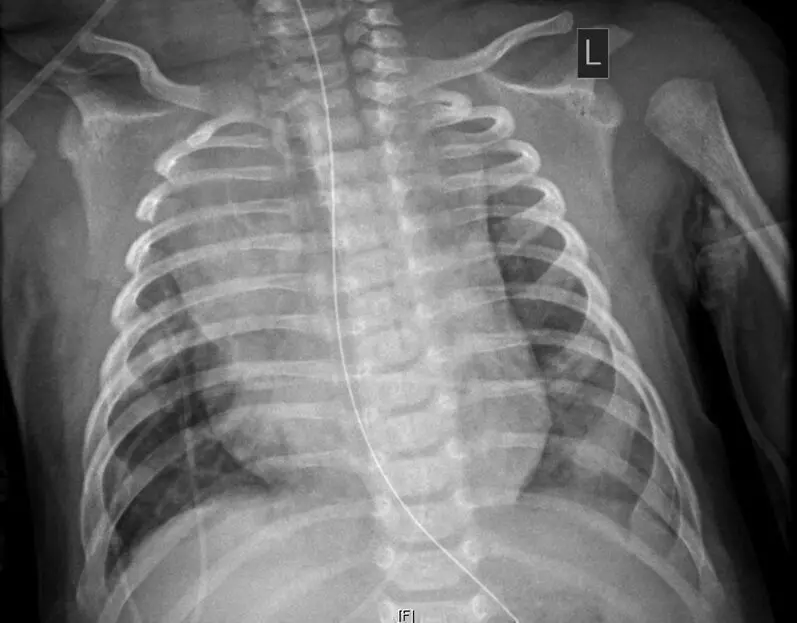- Home
- Medical news & Guidelines
- Anesthesiology
- Cardiology and CTVS
- Critical Care
- Dentistry
- Dermatology
- Diabetes and Endocrinology
- ENT
- Gastroenterology
- Medicine
- Nephrology
- Neurology
- Obstretics-Gynaecology
- Oncology
- Ophthalmology
- Orthopaedics
- Pediatrics-Neonatology
- Psychiatry
- Pulmonology
- Radiology
- Surgery
- Urology
- Laboratory Medicine
- Diet
- Nursing
- Paramedical
- Physiotherapy
- Health news
- Fact Check
- Bone Health Fact Check
- Brain Health Fact Check
- Cancer Related Fact Check
- Child Care Fact Check
- Dental and oral health fact check
- Diabetes and metabolic health fact check
- Diet and Nutrition Fact Check
- Eye and ENT Care Fact Check
- Fitness fact check
- Gut health fact check
- Heart health fact check
- Kidney health fact check
- Medical education fact check
- Men's health fact check
- Respiratory fact check
- Skin and hair care fact check
- Vaccine and Immunization fact check
- Women's health fact check
- AYUSH
- State News
- Andaman and Nicobar Islands
- Andhra Pradesh
- Arunachal Pradesh
- Assam
- Bihar
- Chandigarh
- Chattisgarh
- Dadra and Nagar Haveli
- Daman and Diu
- Delhi
- Goa
- Gujarat
- Haryana
- Himachal Pradesh
- Jammu & Kashmir
- Jharkhand
- Karnataka
- Kerala
- Ladakh
- Lakshadweep
- Madhya Pradesh
- Maharashtra
- Manipur
- Meghalaya
- Mizoram
- Nagaland
- Odisha
- Puducherry
- Punjab
- Rajasthan
- Sikkim
- Tamil Nadu
- Telangana
- Tripura
- Uttar Pradesh
- Uttrakhand
- West Bengal
- Medical Education
- Industry
24% of patients of COVID-19 pneumonia may have atelectasis, finds Study

Chest radiograph showing cardiomegaly, bibasilar opacities, and right upper lobe atelectasis. Courtesy JACC: Case Reports
In patients with SARS-CoV-2 pneumonia, atelectasis might appear in up to 24% of patients, reports a recent study conducted at the Critical Care Department and Pain Unit, Puerta de Hierro Universitary Hospital - Majadahonda, Madrid, Spain.
Álvaro Mingote along with a team of researchers aimed to estimate the prevalence of atelectasis assessed with computer tomography (CT) in SARS-CoV-2 pneumonia and the relationship between the amount of atelectasis with oxygenation impairment, Intensive Care Unit admission rate and the length of in-hospital stay.
The research is published in the BMC Pulmonary Medicine Journal.
The authors included a total of two-hundred thirty-seven patients, all of whom were admitted to the hospital with SARS-CoV-2 pneumonia and diagnosed by clinical, radiology and molecular tests in the nasopharyngeal swab who underwent a chest computed tomography because of a respiratory worsening.
Patients were divided into three groups depending on the presence and amount of atelectasis at the computed tomography: no atelectasis, small atelectasis (< 5% of the estimated lung volume) or large atelectasis (> 5% of the estimated lung volume).
In all patients, clinical severity, oxygen-therapy need, Intensive Care Unit admission rate, the length of in-hospital stay and in-hospital mortality data were collected.
The results from the study revealed that thirty patients (19%) showed small atelectasis while eight patients (5%) showed large atelectasis. One hundred and seventeen patients (76%) did not show atelectasis at all.
Patients with large atelectasis compared to patients with small atelectasis had lower SatO2/FiO2 (182 vs 411 respectively, p = 0.01), needed more days of oxygen therapy (20 vs 5 days respectively, p = 0,02), more frequently Intensive Care Unit admission (75% vs 7% respectively, p < 0.01) and a longer period of hospitalization (40 vs 14 days respectively p < 0.01).
Hence, this led the authors to conclude that in patients with SARS-CoV-2 pneumonia, atelectasis might appear in up to 24% of patients and the presence of larger amount of atelectasis is associated with worse oxygenation and clinical outcome.
Mingote, Á., Albajar, A., García Benedito, P. et al. Prevalence and clinical consequences of atelectasis in SARS-CoV-2 pneumonia: a computed tomography retrospective cohort study. BMC Pulm Med 21, 267 (2021). https://doi.org/10.1186/s12890-021-01638-9
Dr. Nandita Mohan is a practicing pediatric dentist with more than 5 years of clinical work experience. Along with this, she is equally interested in keeping herself up to date about the latest developments in the field of medicine and dentistry which is the driving force for her to be in association with Medical Dialogues. She also has her name attached with many publications; both national and international. She has pursued her BDS from Rajiv Gandhi University of Health Sciences, Bangalore and later went to enter her dream specialty (MDS) in the Department of Pedodontics and Preventive Dentistry from Pt. B.D. Sharma University of Health Sciences. Through all the years of experience, her core interest in learning something new has never stopped. She can be contacted at editorial@medicaldialogues.in. Contact no. 011-43720751
Dr Kamal Kant Kohli-MBBS, DTCD- a chest specialist with more than 30 years of practice and a flair for writing clinical articles, Dr Kamal Kant Kohli joined Medical Dialogues as a Chief Editor of Medical News. Besides writing articles, as an editor, he proofreads and verifies all the medical content published on Medical Dialogues including those coming from journals, studies,medical conferences,guidelines etc. Email: drkohli@medicaldialogues.in. Contact no. 011-43720751


